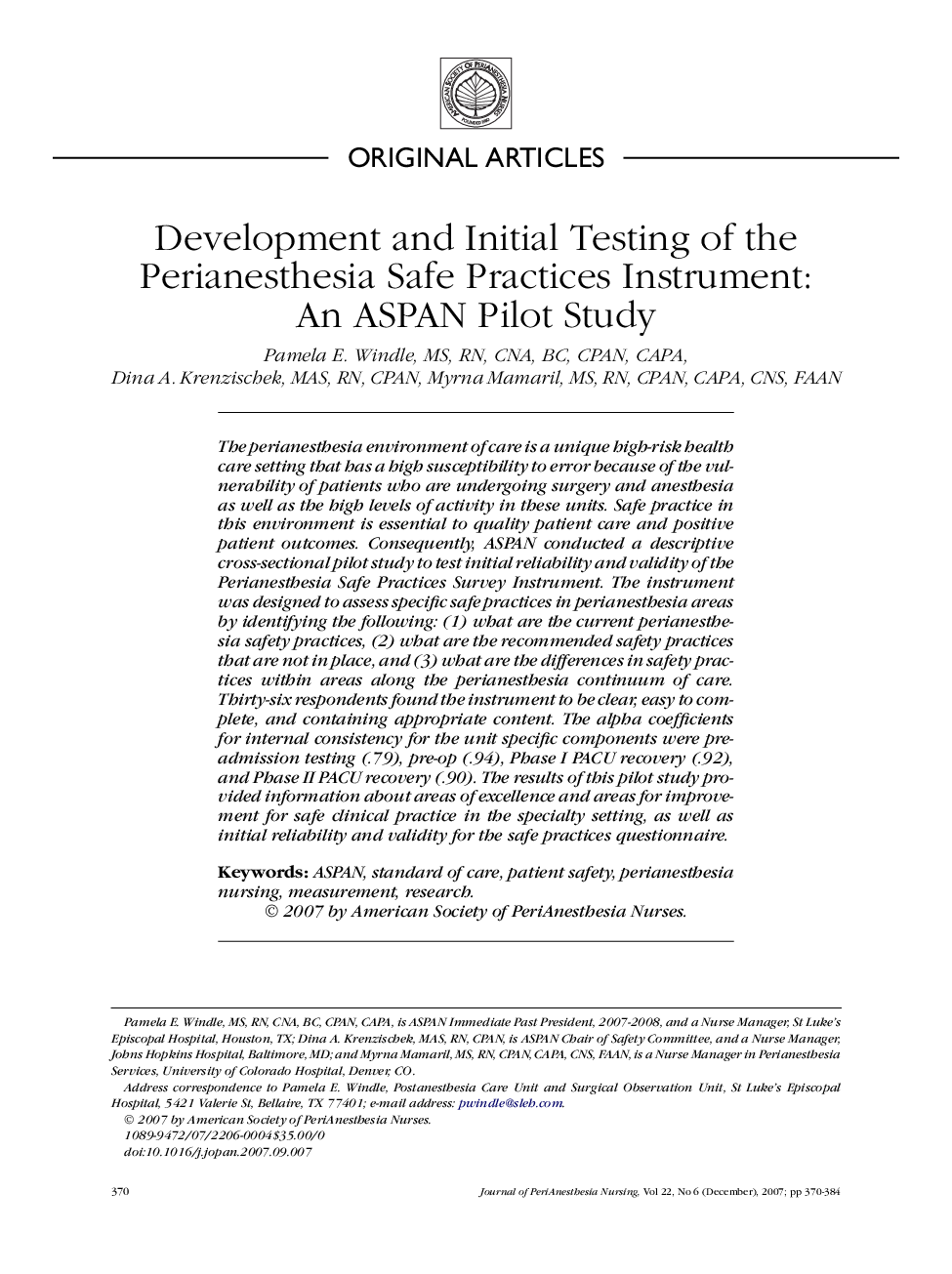| Article ID | Journal | Published Year | Pages | File Type |
|---|---|---|---|---|
| 2667195 | Journal of PeriAnesthesia Nursing | 2007 | 15 Pages |
The perianesthesia environment of care is a unique high-risk health care setting that has a high susceptibility to error because of the vulnerability of patients who are undergoing surgery and anesthesia as well as the high levels of activity in these units. Safe practice in this environment is essential to quality patient care and positive patient outcomes. Consequently, ASPAN conducted a descriptive cross-sectional pilot study to test initial reliability and validity of the Perianesthesia Safe Practices Survey Instrument. The instrument was designed to assess specific safe practices in perianesthesia areas by identifying the following: (1) what are the current perianesthesia safety practices, (2) what are the recommended safety practices that are not in place, and (3) what are the differences in safety practices within areas along the perianesthesia continuum of care. Thirty-six respondents found the instrument to be clear, easy to complete, and containing appropriate content. The alpha coefficients for internal consistency for the unit specific components were preadmission testing (.79), pre-op (.94), Phase I PACU recovery (.92), and Phase II PACU recovery (.90). The results of this pilot study provided information about areas of excellence and areas for improvement for safe clinical practice in the specialty setting, as well as initial reliability and validity for the safe practices questionnaire.
